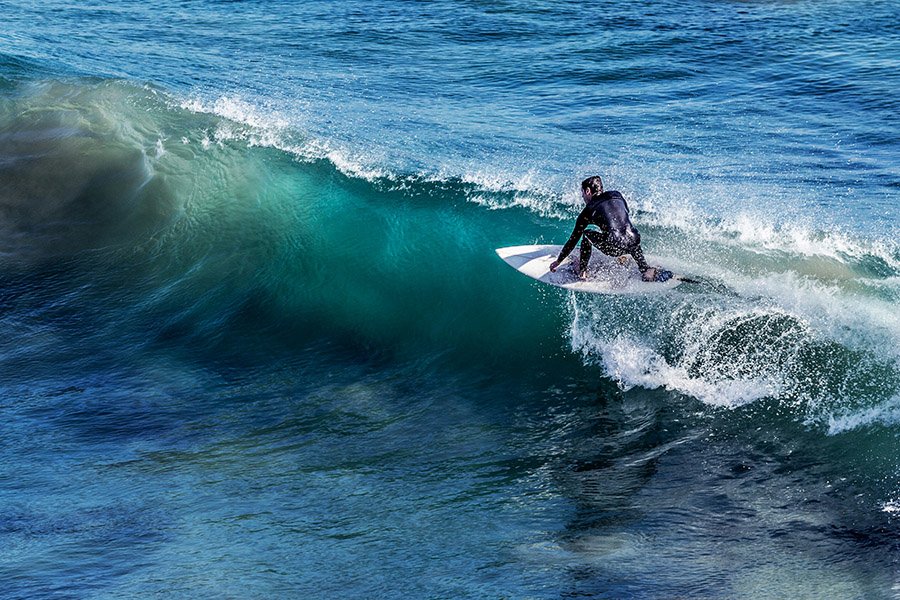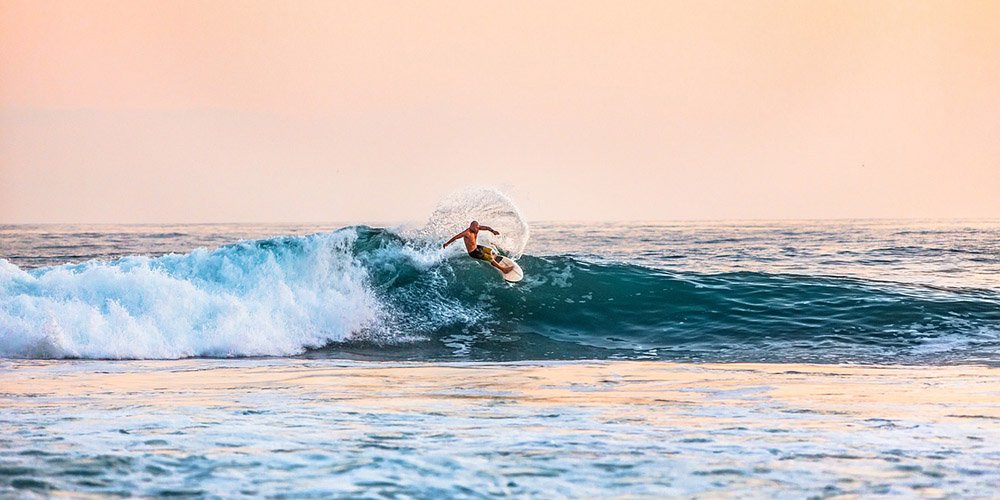Is Surfing Hard? Here’s The Truth
Surfing often conjures images of effortless glides along crystal-clear waves, but for many beginners, the reality is quite different. Surfing is a sport that combines physical strength, ocean knowledge, and endless practice. While it can be one of the most rewarding activities, it’s also notoriously challenging, especially for those just starting out. This guide will explore why surfing is difficult, what factors influence its difficulty, and how you can make the learning process smoother and more enjoyable.
Why Surfing is Hard
Physical Demands: Surfing is incredibly physically demanding. It requires a unique blend of strength, endurance, and explosive movements. Paddling out to the waves, popping up on the board, and maintaining balance while riding the wave all require significant energy. For beginners, this can be particularly exhausting as you build the necessary muscle memory and stamina. The physical exertion is compounded by the need to constantly adjust your body to the dynamic environment of the ocean.
Ocean Knowledge: Understanding the ocean is crucial to surfing success. Waves are formed by a complex interplay of wind, tide, and underwater topography. As a beginner, learning to read these elements—knowing when and where a wave will break, recognizing rip currents, and understanding tidal movements—can be overwhelming. This knowledge is something that even seasoned surfers continue to refine over years.
Time Spent Riding: One of the surprising aspects of surfing is how little time you actually spend riding waves. The majority of your time in the water is spent paddling, waiting for the right wave, and positioning yourself. For a one-hour session, you might only spend a few minutes actually standing and riding a wave. This limited riding time makes the learning curve steep, as you have few opportunities to practice your technique.
Unique Challenges of Each Wave: No two waves are the same. Each wave presents a unique challenge, requiring you to adapt your approach constantly. This variability makes it difficult for beginners to gain consistency and predictability in their surfing. Learning to anticipate and respond to these differences is a key part of becoming a competent surfer.
Also read: Types of Surfing: A Complete Overview

Factors That Influence the Difficulty
Type of Board: The surfboard you choose has a significant impact on how difficult you find surfing. Larger boards, such as longboards, are generally more stable and easier for beginners to learn on. They provide a larger surface area, making it easier to balance and catch waves. In contrast, smaller boards are more challenging to maneuver and balance on, especially in rougher conditions.
Wave Conditions: The type of waves you practice on can either help or hinder your progress. Small, foam waves near the shore are ideal for beginners, as they are easier to catch and ride. On the other hand, large, powerful waves can be overwhelming and dangerous for someone just starting out. Learning to choose the right waves is an essential skill in making surfing less difficult.
Fitness Level: Being in good physical shape can make a significant difference in your surfing experience. Strong paddling muscles, core stability, and flexibility all contribute to better performance in the water. Incorporating exercises like swimming, push-ups, and yoga into your routine can help build the strength and endurance needed for surfing.
Common Beginner Mistakes
Using Knees to Pop Up: A common mistake among beginners is using their knees to pop up on the board. While this might feel more stable initially, it actually hinders your ability to quickly and smoothly transition to a standing position. Instead, focus on popping up directly from your hands and feet, which will give you better control and balance.
Grabbing the Rails: Another mistake is grabbing the rails (sides) of the board when trying to stand up. This instinctive move reduces your stability and makes it harder to maintain balance. It’s better to place your hands flat on the board, just under your shoulders, to ensure a smoother pop-up.
Choosing the Wrong Waves: Beginners often make the mistake of trying to surf waves that are beyond their skill level. Large, steep waves can be intimidating and difficult to handle. Start with smaller, more manageable waves, and gradually progress as your skills improve.
Also read: The Ultimate Guide to River Surfing for Beginners

Tips to Make Surfing Easier
Start with a Lesson: Taking a surfing lesson can significantly shorten your learning curve. A professional instructor can teach you the basics, correct your form, and provide valuable feedback that you wouldn’t get if you were learning on your own. This can help you avoid developing bad habits and make your surfing journey more enjoyable from the start.
Spend More Time in the Water: There’s no substitute for time spent in the water. The more you surf, the quicker you’ll progress. Consistent practice allows you to build muscle memory, improve your ocean knowledge, and gain confidence on the board. Aim to surf regularly, even if conditions aren’t perfect, as every session will contribute to your growth as a surfer.
Focus on Fitness Outside the Water: Surfing is a full-body workout, and improving your fitness outside the water can make a big difference in your performance. Exercises that build upper body strength for paddling, core stability for balance, and leg strength for popping up will all contribute to making surfing easier.
Practice Falling Safely: Falling is an inevitable part of learning to surf, so it’s important to know how to do it safely. When you fall, try to fall away from your board to avoid injury. Protect your head with your arms as you resurface to prevent accidents with your board’s fins. Embracing the learning process and understanding that falling is a part of it will help you stay motivated.
Also read: 100 Hilarious Surfing Puns: Wave Your Troubles Away with Laughter
The Rewards of Surfing
Despite the challenges, surfing offers unique rewards that make the effort worthwhile. The feeling of catching your first wave and riding it to shore is exhilarating and unforgettable. Surfing also provides a deep connection with nature, a great physical workout, and a sense of accomplishment as you progress. The challenges you overcome in learning to surf only add to the satisfaction you’ll feel as you improve and experience the joy of riding waves.
Conclusion
Surfing is undoubtedly hard, but it’s also one of the most rewarding sports you can learn. By understanding the physical demands, learning how to read the ocean, and practicing consistently, you can overcome the challenges and start enjoying the thrill of surfing. Remember to be patient with yourself, take advantage of lessons, and embrace the process. With persistence, you’ll find that the journey to becoming a proficient surfer is as rewarding as the destination.





